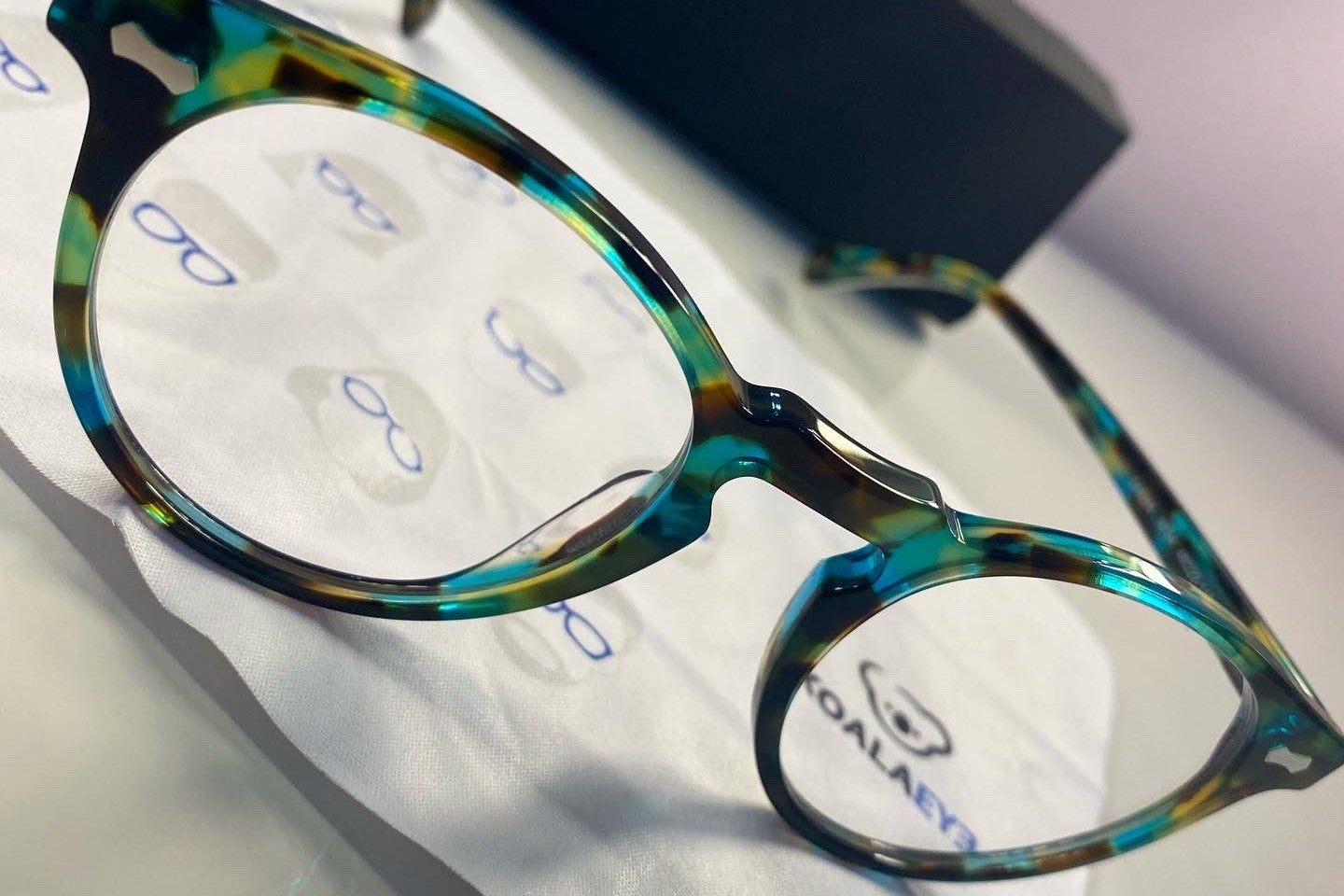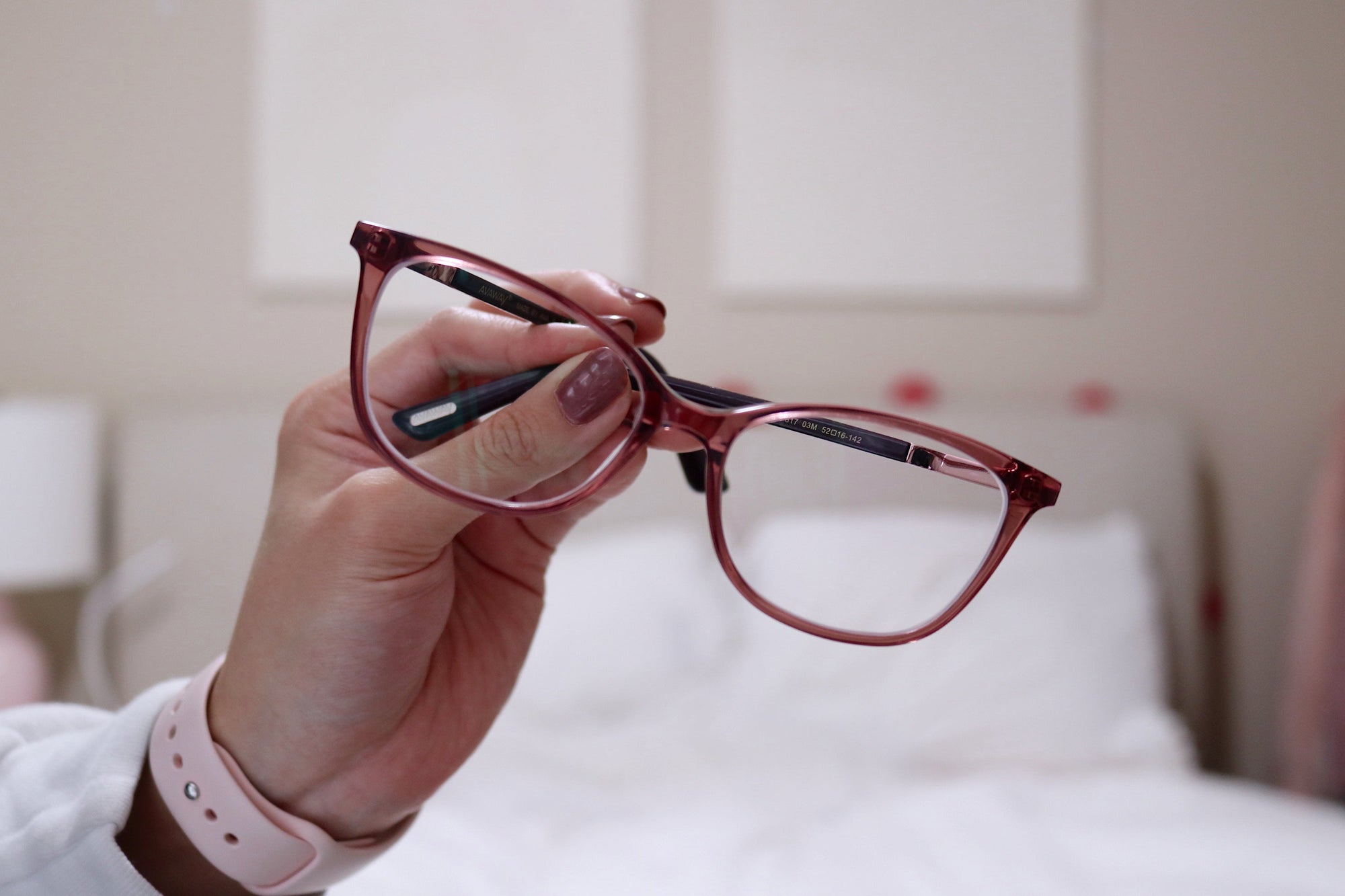How Do Progressive Lenses Work?
So, how do progressive glasses work? Progressive lenses allow you to see at all distances with one pair of glasses. They start with your distance prescriptions at the top of the lens and increase as you move toward the bottom of the lens. You can move your head position to allow you to focus through different areas of the lens.
Move your head upwards to see something in the distance, and hold it straight for intermediate or arm’s length vision and down for near vision for objects that are close up. Apart from the aesthetic improvement of the lens without the line segments, progressive lenses avoid the visual discontinuity or image-jump when your eyes shift from one zone to the other in non-progressive multifocals.
What Are Progressive Glasses?
Trifocal glasses and no-line progressive lenses are multi-focal glasses, meaning that their lenses offer multiple correction fields. Whether you have been wearing multi-focal glasses for a while, or you have just begun to look at options for correcting vision after 40 years old, you may have heard the terms trifocal or progressive glasses.
Progressive lenses offer a smooth transition from distance vision through intermediate vision to near vision, and they supply all the in-between corrections. Progressive lenses have three different viewing zones, as trifocal glasses do, and they have progressive powers of corrections, easing eye strain and providing the most natural vision correction.
What Is Plastic Lens?
In the above part, we have introduced what polycarbonate lenses are. In this section, we will show you what the plastic lens is.
The plastic lens was first introduced in 1947. Since then, plastic has become a popular and widely used material for making eyeglasses lenses. Since the introduction and use of plastic lenses, it has sealed its mark as the most preferred choice in the optical industry.
Plastic lenses are light. With this feature, plastic lenses are popular because they will not be heavy inside the glasses frame and permit for an easy fit in any type of glasses frame. In addition, plastic glasses are cheap and easy to obtain in desired amounts. So, they are affordable for most people. Plastic lenses are very durable. So, they do not shatter easily on impact which makes it a great choice for individuals who are active or tend to drop their glasses often.
However, compared with other lens materials, plastic lenses are usually thick due to their low index of refraction. The soft feature of plastic glasses makes them susceptible to scratching from a sharp object and why scratch-resistant coating is applied to form an additional protective layer. Plastic lenses do not provide ultraviolet protection.
Orthokeratology lenses are used for myopia control.
The effect of the orthokeratology lens in controlling the increase of myopia in teenagers has been unanimously affirmed by the ophthalmology industry at home and abroad. In February 2006, an authoritative ophthalmological journal published a review of the retarding effect of rigidity breathable orthokeratology lens on the progression of myopia in children. This paper reviews the literature on orthokeratology and myopia in the past 30 years and points out that rigidity breathable orthokeratology can prevent or alleviate the progress of myopia, the mechanism of which is that rigid breathable contact lens can inhibit the progress of myopia by providing clearer retinal image quality. Medium and high concentration of atropine will affect students' near-use vision, while low concentration of atropine has not been used clinically in China, so orthokeratology lens has become one of the known myopia control methods with the best statistical effect. In three to five-year case studies, orthokeratology lenses alleviate a 40 to 60 percent increase in myopia compared with wearing a frame lens or a soft contact lens. Other studies have found that 65 to 70 percent of orthokeratology lens wearers show little or no axial length increase.
Plate glasses frame
Sheet glasses frames are generally made of high-tech plastic memory sheets. Its appearance is beautiful and fashionable, and its styles are diverse. Therefore, plank glasses are easier to match with clothes, which can show the personality and style of the wearer.
What color coating is good?
The purpose of plating anti-reflection film is to reduce the reflection of light. But because it is impossible to be completely free of reflected light, there will always be some residual reflection on the surface of the lens that causes the visible color. Someone asks which kind of these residual color is best. It does not have a standard actually. It is mainly based on a personal preference for color. More on the market at present is green color. However, these residual colors can initially help us to judge the thickness of the film: when the film is thin (the thickness is less than 139nm), the reflected light will show light yellow, and when the film is thick (the thickness is more than 139nm), it will show blue-green. The current multi-layer anti-reflection film thickness is about 0.3μm.
Tungsten Carbon Steel Spectacle Frame
Tungsten-carbon steel is an upgraded version of TR90. Its characteristics are basically lighter, softer, and higher in hardness than the original TR90. It is said to be the material softer than water, lighter than paper, and harder than steel. Tungsten-carbon materials are also called yellow materials in the glasses industry, and the terms of tungsten-carbon plastic are only for consumers because consumers do not know what they mean.
In terms of raw materials, titanium is the most expensive material, and the value of raw materials determines the final retail price of the glasses. The cost of tungsten carbon is slightly higher than the price of TR90 by about 20%, which is about the same as the value of low-end alloy glasses. The cost and value of pure titanium are 3 to 4 times that of TR90 and low-end alloy glasses, so the basic price difference between a pair of brand new pure titanium glasses and TR90 glasses is very large.











































